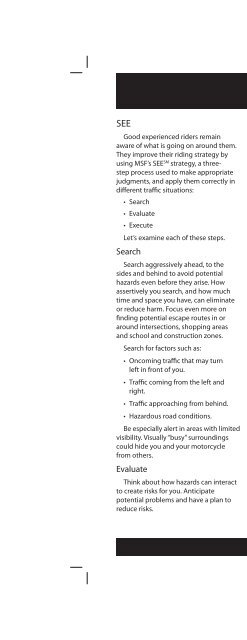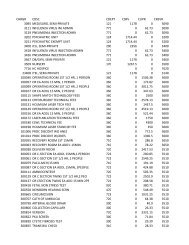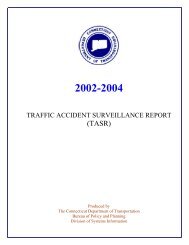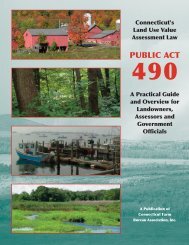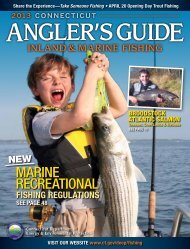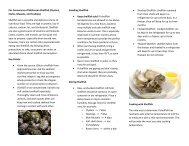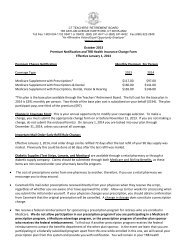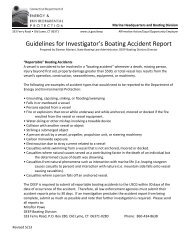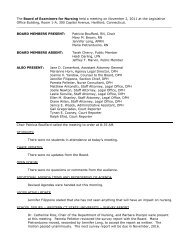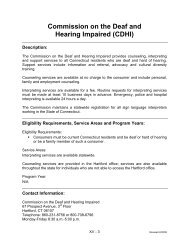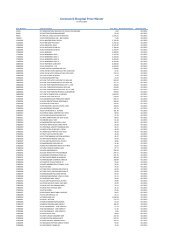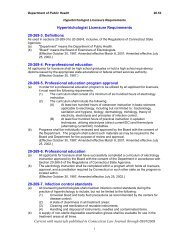The Connecticut Motorcycle Operator's Manual - CT.gov
The Connecticut Motorcycle Operator's Manual - CT.gov
The Connecticut Motorcycle Operator's Manual - CT.gov
You also want an ePaper? Increase the reach of your titles
YUMPU automatically turns print PDFs into web optimized ePapers that Google loves.
SEE<br />
Good experienced riders remain<br />
aware of what is going on around them.<br />
<strong>The</strong>y improve their riding strategy by<br />
using MSF’s SEESM strategy, a threestep<br />
process used to make appropriate<br />
judgments, and apply them correctly in<br />
diff erent traffi c situations:<br />
• S earch<br />
• E valuate<br />
• E xecute<br />
Let’s examine each of these steps.<br />
Search<br />
Search aggressively ahead, to the<br />
sides and behind to avoid potential<br />
hazards even before they arise. How<br />
assertively you search, and how much<br />
time and space you have, can eliminate<br />
or reduce harm. Focus even more on<br />
fi nding potential escape routes in or<br />
around intersections, shopping areas<br />
and school and construction zones.<br />
Search for factors such as:<br />
• Oncoming traffi c that may turn<br />
left in front of you.<br />
• Traffi c coming from the left and<br />
right.<br />
• Traffi c approaching from behind.<br />
• Hazardous road conditions.<br />
Be especially alert in areas with limited<br />
visibility. Visually “busy” surroundings<br />
could hide you and your motorcycle<br />
from others.<br />
Evaluate<br />
Think about how hazards can interact<br />
to create risks for you. Anticipate<br />
potential problems and have a plan to<br />
reduce risks.<br />
21<br />
• Road and surface characteristics<br />
— Potholes, guardrails, bridges,<br />
telephone poles and trees won’t<br />
move into your path but may<br />
infl uence your riding strategy.<br />
• Traffi c control devices — Look for<br />
traffi c signals, including regulatory<br />
signs, warning signs, and pavement<br />
markings, to help you evaluate<br />
circumstances ahead.<br />
• Vehicles and other traffi c — May<br />
move into your path and increase<br />
the likelihood of a crash.<br />
Think about your time and space<br />
requirements in order to maintain<br />
a margin of safety. You must leave<br />
yourself time to react if an emergency<br />
arises.<br />
Execute<br />
Carry out your decision.<br />
To create more space and minimize<br />
harm from any hazard:<br />
• Communicate your presence with<br />
lights and/or horn.<br />
• Adjust your speed by accelerating,<br />
stopping or slowing.<br />
• Adjust your position and/or<br />
direction.<br />
Apply the old adage “one step at a<br />
time” to handle two or more hazards.<br />
Adjust speed to permit two hazards<br />
to separate. <strong>The</strong>n deal with them one<br />
at a time as single hazards. Decisionmaking<br />
becomes more complex with<br />
three or more hazards. Evaluate the<br />
consequences of each and give equal<br />
distance to the hazards.


